
Vueron Newsletter
No. 70
2023.12.08
| Magna enhances ADAS capabilities by joining Northstar 5G innovation program | ||
| TuSimple lays off 150 more employees as it winds down US operations | ||
| Kodiak’s military prototype AV is a Ford F-150 pickup | ||
| Dongfeng Sharing launches self-driving bus trial operation in Shiyan, Hubei Province |
1. Magna enhances ADAS capabilities by joining Northstar 5G innovation program
-
- Magna is enhancing its automated driving capabilities through participation in NorthStar—a 5G innovation program by Telia Sweden and Ericsson for industrial enterprises.
- A dedicated private 5G network has been built at Magna’s test track in Vårgårda, Sweden, by Telia and Ericsson, focusing on Advanced Driver Assistance System (ADAS) solutions in vehicle-to-vehicle (V2V) and vehicle-to-everything (V2X) connectivity.
- Magna, as part of NorthStar, gains access to 5G millimeter wave (mmWave) technology, providing low latency gigabit speeds for ADAS trials.
- The 5G network on Magna’s test track supports gigabit data speeds and ultra-low latency, crucial for real-time data from vehicle sensors, enabling driving automation and driver support systems.
- Leveraging the 26GHz frequency band and 400MHz bandwidth, the network aids in timely alerts to drivers, preventing accidents, and minimizing their impact.
- NorthStar’s 5G network, powered by Ericsson dual-mode 5G Core, connects to Telia’s existing public 5G network, offering high-speed connectivity across large geographical areas.
- Magna’s ADAS technology contributes to driver safety by controlling steering, brakes, and acceleration, reducing the risk of serious accidents and paving the way for future autonomous driving and new mobility solutions.
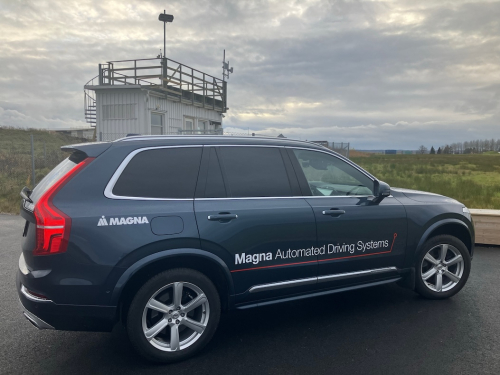
The collaboration with NorthStar and the utilization of 5G mmWave technology demonstrate Magna’s commitment to advancing automated driving capabilities. Magna’s ADAS technology not only aims at reducing the risk of accidents but also focuses on creating an exceptional driving experience by integrating the driver’s needs and environment.
2. TuSimple lays off 150 more employees as it winds down US operations
-
- TuSimple Holdings, a prominent player in U.S. autonomous trucking development, is winding down its operations after a five-month review found no takers for its business.
- TuSimple faced internal leadership struggles in late 2022, contributing to the departure of its development partner Navistar International, leading to a breakdown of their 2.5-year partnership.
- Unable to secure another Original Equipment Manufacturer (OEM) partner, TuSimple relied on Tier 1 suppliers for components like steering and braking for its autonomous trucks.
- TuSimple is laying off 150 of its remaining U.S. employees, amounting to 75% of the remaining U.S. workforce and 19% of its global employment. The remaining employees will focus on winding down U.S. operations.
- TuSimple had previously indicated plans to seek another partner for autonomous trucking in the U.S. as of March. However, a second wave of layoffs in May led to a strategic review, and the possibility of exiting the U.S. was considered.
- The company had already laid off over 300 employees in December 2022, shuttering an autonomous freight-hauling operation that used safety drivers.
- TuSimple had celebrated 10 million autonomous miles in March.
- Despite efforts to promote its patent portfolio, TuSimple apparently received no meaningful offers, leading to the decision to wind down operations.
- TuSimple’s remaining focus will be on the Asia-Pacific region, where it has concentrated its efforts. The company aims to sell U.S. assets and undergo a strategic shift.
- TuSimple expects one-time charges of approximately $7 million to $8 million for the restructuring, covering expenses related to employee transition, severance, benefits, and other costs.
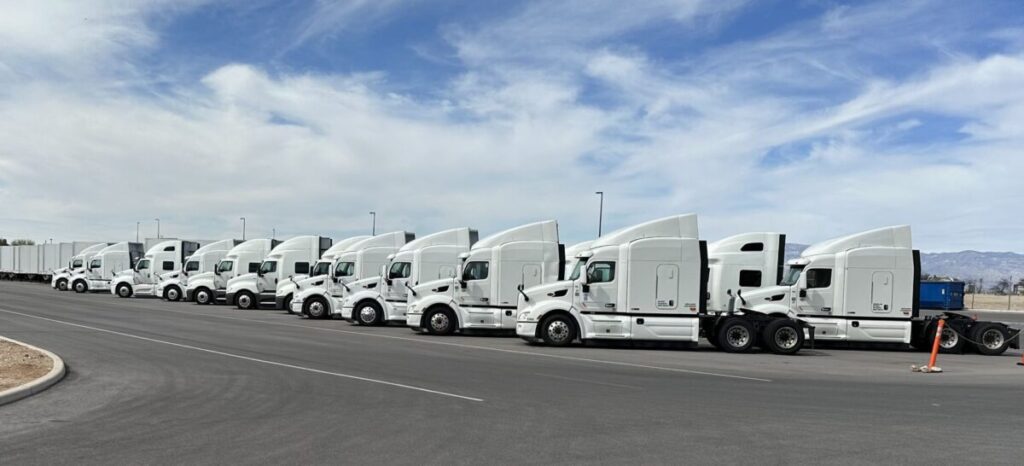
TuSimple’s exit from autonomous trucking development adds to a trend with Embark Trucks and Waymo Via also leaving this year, indicating challenges and uncertainties in the industry. Internal leadership struggles and the breakdown of a key partnership with Navistar International appear to have significantly impacted TuSimple’s ability to sustain its operations.
3. Cruise Will Re-Launch Robotaxis ‘With Communities, Not At Them’
-
- In a recent email to Cruise employees, the company’s new president and CTO, Mo Elshenawy, conveyed a more conciliatory approach, indicating a strategic pullback from an aggressive robotaxi rollout.
- The focus is on commercializing a fully driverless L4 service, with plans to relaunch ride-hailing in one city, prioritizing collaboration with communities.
- The email acknowledges the need for a humbler approach, with a commitment to independent safety reviews, trust, accountability, and transparency.
- General Motors, Cruise’s parent company, remains committed to supporting safety reviews and Cruise’s refocus on trust and transparency.
- The email does not provide details on how, when, or where the relaunch will occur but emphasizes a path to deliver the best self-driving technology and unlock future commercial opportunities.
- The president’s approach contrasts with the ambitious plan laid out by the now-departed CEO, Kyle Vogt, who aimed for significant growth.
- Cruise has faced criticism for perceived arrogance in its interactions with municipal agencies, and the new approach aims to address concerns and improve relationships.
- Layoffs are anticipated, and the company acknowledges the need to rebuild and elevate its focus on psychological safety and employee engagement.
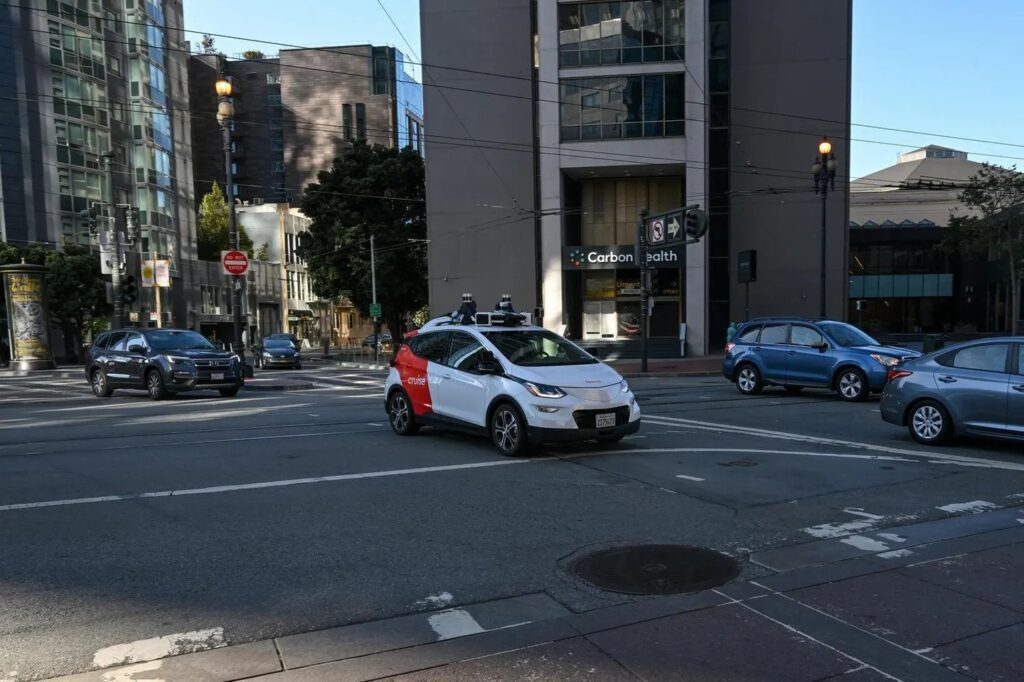
The departure of the previous CEO and the acknowledgment of layoffs signal a period of restructuring and potential reevaluation of growth expectations. The move away from an aggressive expansion plan may reflect a broader industry trend of reassessing the pace and approach to autonomous vehicle deployment, taking into account safety, regulatory, and public perception considerations.
4. Kodiak’s military prototype AV is a Ford F-150 pickup
-
- Kodiak Robotics has revealed its first autonomous test vehicle for the U.S. Department of Defense (DOD), a Ford F-150 pickup truck modified with Kodiak’s software and sensor stack.
- The DOD is utilizing the vehicle to conduct autonomous surveillance and reconnaissance missions in off-road terrain, diverse operational conditions, and GPS-challenged environments.
- Kodiak secured a $50 million two-year contract with the Army in December 2022, with an additional year granted to build and deliver two off-road-capable vehicles based on the F-150.
- The focus of the pilot project is to test the feasibility and success of autonomous military applications in challenging environments.
- If successful, Kodiak could become a future partner for the Army in advancing autonomous military technologies, as the military envisions a future with autonomous capabilities on the battlefield.
- Kodiak’s primary commercial focus is on self-driving trucks, but the military sector is seen as a quicker avenue to revenue for advanced mobility companies.
- The partnership involves Kodiak providing the software and sensor suite, collaborating with hardware providers to integrate the Kodiak Driver onto a purpose-built, ground reconnaissance vehicle.
- Kodiak emphasizes the importance of providing a versatile software and sensor stack that can be integrated into various vehicle types and serve multiple use cases.
- The modular and swappable SensorPods used on Kodiak’s Class-8 trucks have been adapted for defense applications, with the DefensePod designed for quick field replacement in under 10 minutes by a technician with no specialized training.
- Kodiak’s autonomous driving system is developed to be broadly applicable beyond highway environments, allowing it to work effectively in dual-use environments.
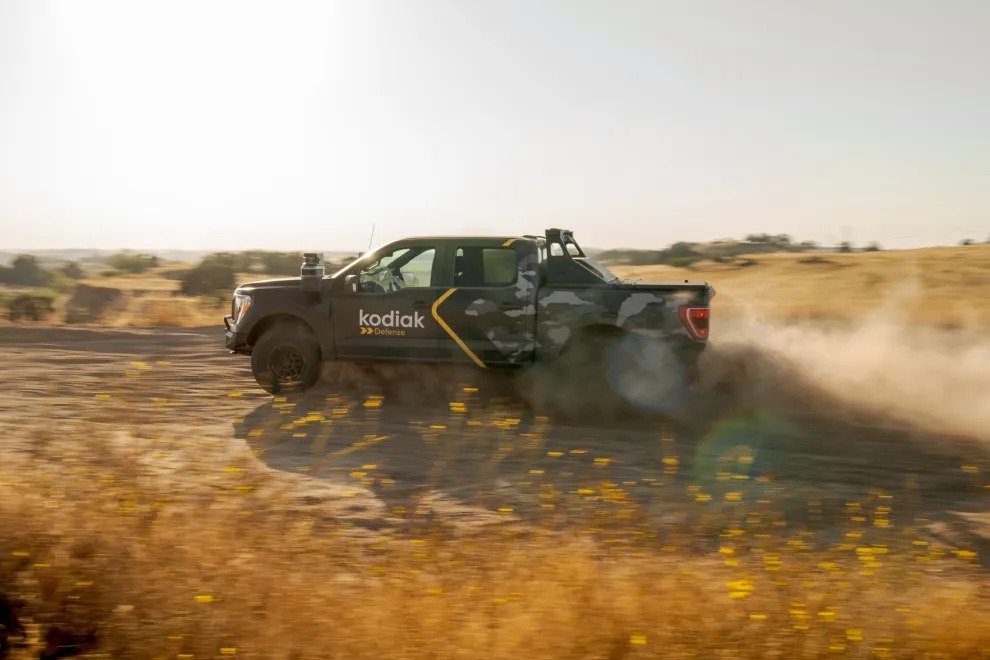
Kodiak Robotics’ involvement in autonomous military applications highlights the dual-use potential of its technology, demonstrating adaptability beyond commercial trucking to military reconnaissance. The partnership with the Department of Defense positions Kodiak as a potential player in advancing autonomous technologies for military use, opening new revenue streams for the company.
5. Dongfeng Sharing launches self-driving bus trial operation in Shiyan, Hubei Province
-
- The Shiyan Intelligent Connected Application Demonstration Project began on-road trial operations on November 27, deploying ten autonomous Sharing-Bus vehicles in Shiyan, Hubei Province, China.
- The project focuses on the Longmen Industrial Park, aiming to establish a seamless mobile service model for public transportation, incorporating “Vehicle + Road + Cloud + Station + Area” elements.
- A 17-kilometer driverless operating route with two smart bus stations is established, deploying nine Sharing-Buses for public service. An additional 2-kilometer experiential route around the Lin’an Logistics Center introduces one unmanned Sharing-Bus.
- The Sharing-Buses, developed jointly by Dongfeng Sharing and Dongfeng Special Vehicle feature Level 4 autonomous driving capabilities and are equipped with LiDAR, radar, and high-definition cameras for environmental perception within a 260-meter radius.
- The vehicles open automatic doors for passengers at stations, accommodating up to nine passengers with a smooth operating speed of 30 km/h.
- Each vehicle includes a safety officer during the trial period, intervening in emergencies while the vehicles operate autonomously. Remote backend assistance ensures driving safety.
- Dongfeng Sharing, a leading enterprise in the intelligent connected automotive chain, actively explores innovative public transportation mobility services. It has expanded operational deployments to 15 provinces and 35+ cities nationwide.
- Operational deployments include Xiong’an New Area, Suzhou, Chongqing, Ordos, Xiamen, and beyond Wuhan.
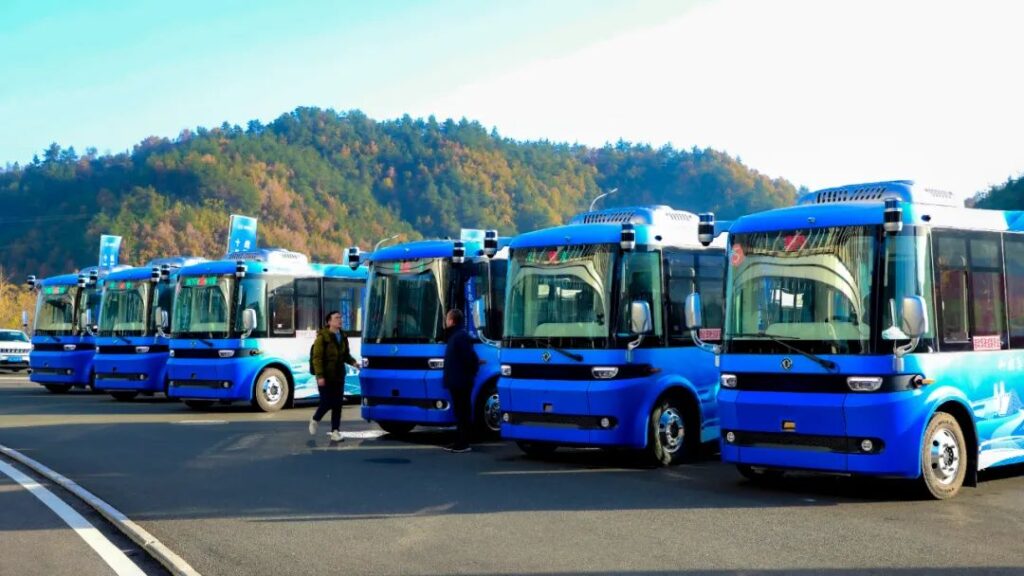
Dongfeng Sharing’s initiation of the Shiyan Intelligent Connected Application Demonstration Project underscores the company’s commitment to advancing autonomous public transportation services. The project’s success may contribute to the broader adoption and acceptance of autonomous public transportation, paving the way for future developments and applications in smart cities and urban mobility.
*Contents above are the opinion of ChatGPT, not an individual nor company

